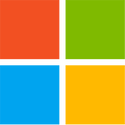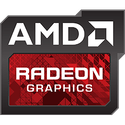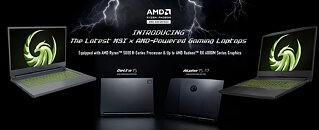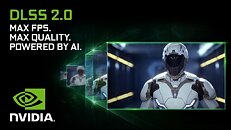
Microsoft's Agility SDK Update Brings Shader Execution Reordering, Opacity Micromaps, and Tiled Resource Tier 4 Support
Microsoft has quietly rolled out two updates to its DirectX Agility SDK, and developers are already finding reasons to celebrate. The 1.717-preview release brings Shader Execution Reordering (SER) and Cooperative Vectors to the table, while the 1.616-retail update introduces Opacity Micromaps (OMM) and D3D12 Tiled Resource Tier 4 support. Together, they promise smoother and more efficient ray tracing, as well as improved resource handling. In 1.717-preview, the arrival of Cooperative Vectors means that vector and matrix operations, essential for AI-driven effects, now enjoy dedicated hardware acceleration. Instead of performing complex calculations on the CPU, developers can offload these tasks to the GPU, potentially unlocking richer neural rendering techniques in real time. Additionally, SER provides ray tracing pipelines with a helpful feature: it reorganizes the order in which shader threads execute, reducing wasted cycles caused by thread divergence.
Early internal tests show up to a 2× performance boost in path-traced scenes when SER is enabled. The preview also updates Direct3D's video encoder with a HEVC Reference List extension for longer-term reference frames, a two-pass low-resolution first encode, and built-in PSNR metrics so creators can see exactly how crisp their output really is. The 1.616-retail SDK centers on Opacity Micromaps, a feature designed to handle alpha-tested geometry, such as foliage or chain-link fences, without firing off expensive AnyHit shader calls. With OMM, supported GPUs intelligently skip unnecessary work, and Microsoft's numbers suggest a speedup of as much as 2.3x in path-traced scenes. For example, one NVIDIA demo increased from approximately 55 FPS to around 90 FPS simply by enabling OMM. Today, only NVIDIA's RTX cards have driver-level support for these micromaps, but AMD and Intel are preparing their own updates for the coming months. That same 1.616-retail release also unlocks D3D12 Tiled Resource Tier 4, finally lifting the restriction on packed mipmaps in texture arrays. This means finer-grained texture streaming, less wasted memory, and more creative freedom in writing shader code. NVIDIA has confirmed its support for this tier, Intel's drivers are already shipping, and AMD is aiming to release compatible drivers by early June 2025.
Early internal tests show up to a 2× performance boost in path-traced scenes when SER is enabled. The preview also updates Direct3D's video encoder with a HEVC Reference List extension for longer-term reference frames, a two-pass low-resolution first encode, and built-in PSNR metrics so creators can see exactly how crisp their output really is. The 1.616-retail SDK centers on Opacity Micromaps, a feature designed to handle alpha-tested geometry, such as foliage or chain-link fences, without firing off expensive AnyHit shader calls. With OMM, supported GPUs intelligently skip unnecessary work, and Microsoft's numbers suggest a speedup of as much as 2.3x in path-traced scenes. For example, one NVIDIA demo increased from approximately 55 FPS to around 90 FPS simply by enabling OMM. Today, only NVIDIA's RTX cards have driver-level support for these micromaps, but AMD and Intel are preparing their own updates for the coming months. That same 1.616-retail release also unlocks D3D12 Tiled Resource Tier 4, finally lifting the restriction on packed mipmaps in texture arrays. This means finer-grained texture streaming, less wasted memory, and more creative freedom in writing shader code. NVIDIA has confirmed its support for this tier, Intel's drivers are already shipping, and AMD is aiming to release compatible drivers by early June 2025.





























































